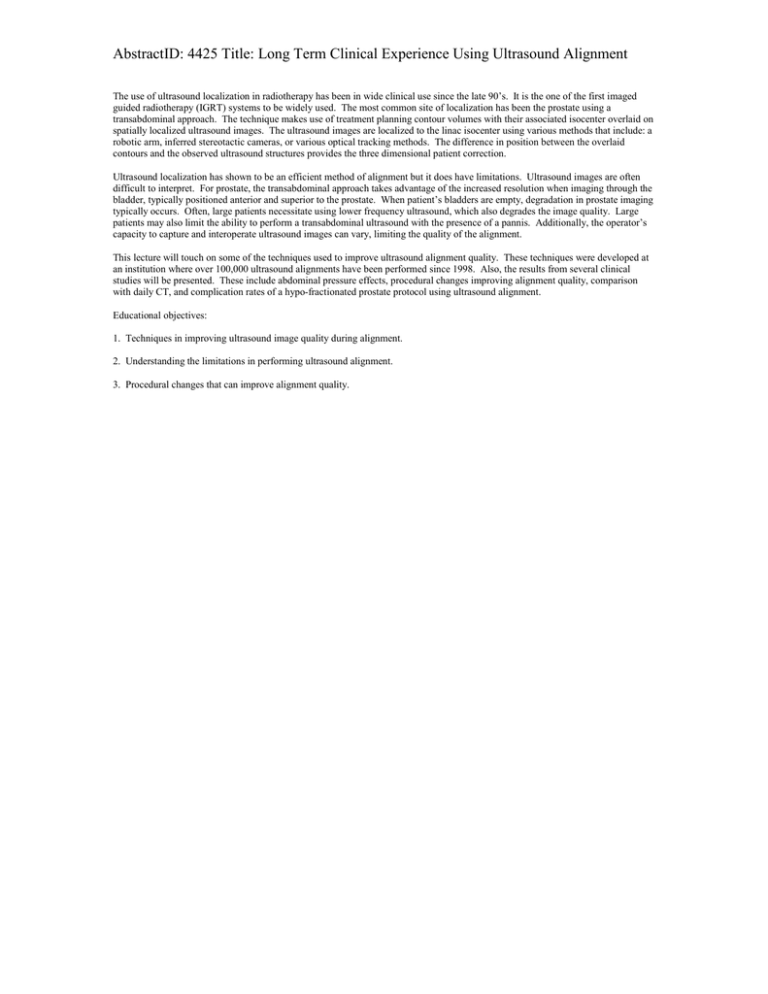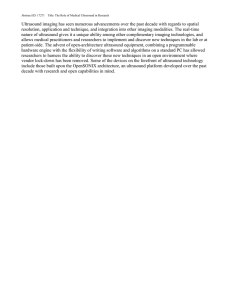AbstractID: 4425 Title: Long Term Clinical Experience Using Ultrasound Alignment
advertisement

AbstractID: 4425 Title: Long Term Clinical Experience Using Ultrasound Alignment The use of ultrasound localization in radiotherapy has been in wide clinical use since the late 90’s. It is the one of the first imaged guided radiotherapy (IGRT) systems to be widely used. The most common site of localization has been the prostate using a transabdominal approach. The technique makes use of treatment planning contour volumes with their associated isocenter overlaid on spatially localized ultrasound images. The ultrasound images are localized to the linac isocenter using various methods that include: a robotic arm, inferred stereotactic cameras, or various optical tracking methods. The difference in position between the overlaid contours and the observed ultrasound structures provides the three dimensional patient correction. Ultrasound localization has shown to be an efficient method of alignment but it does have limitations. Ultrasound images are often difficult to interpret. For prostate, the transabdominal approach takes advantage of the increased resolution when imaging through the bladder, typically positioned anterior and superior to the prostate. When patient’s bladders are empty, degradation in prostate imaging typically occurs. Often, large patients necessitate using lower frequency ultrasound, which also degrades the image quality. Large patients may also limit the ability to perform a transabdominal ultrasound with the presence of a pannis. Additionally, the operator’s capacity to capture and interoperate ultrasound images can vary, limiting the quality of the alignment. This lecture will touch on some of the techniques used to improve ultrasound alignment quality. These techniques were developed at an institution where over 100,000 ultrasound alignments have been performed since 1998. Also, the results from several clinical studies will be presented. These include abdominal pressure effects, procedural changes improving alignment quality, comparison with daily CT, and complication rates of a hypo-fractionated prostate protocol using ultrasound alignment. Educational objectives: 1. Techniques in improving ultrasound image quality during alignment. 2. Understanding the limitations in performing ultrasound alignment. 3. Procedural changes that can improve alignment quality.


